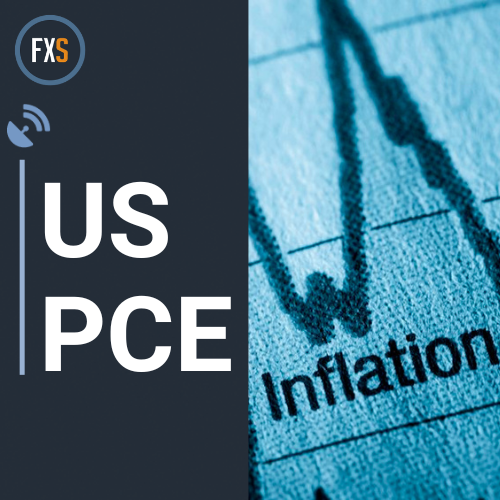The Fed’s preferred inflation gauge, the Core Personal Consumption Expenditure (PCE), will be released by the US Bureau of Economic Analysis (BEA) on Thursday, November 30 at 13:30 GMT and as we get closer to the release time, here are the forecasts of economists and researchers of seven major banks.
Headline PCE is expected at 3.1% year-on-year vs. the prior release of 3.4%, while core PCE is expected to decline two ticks to 3.5% YoY. If so, headline would be the lowest since the first quarter of 2021 but still well above the Fed’s 2% target.
Commerzbank
Prices are likely to have risen by 0.1% in October compared with September and by 0.2% excluding energy and food (core rate). The PCE deflator would therefore also indicate that inflationary pressures are easing. However, the YoY rates of 3.0% and 3.5% (core rate) would still be well above the central bank’s target of 2%.
ING
Data flow includes the Fed’s favoured measure of inflation, which we expect to show a 0.2% MoM rate of price increases. This is broadly in line with what the central bank wants to see and, if repeated over time, would bring the annual rate of inflation as measured by the core personal consumer expenditure deflator back to 2%.
SocGen
Our PCE deflator forecast is just 0.0% and in line with the previously reported CPI for October.
NBF
The annual core PCE deflator, for its part, may have progressed 0.2% MoM in October, a result which should translate into a 2-tick decline of the 12-month rate to 3.5%. Although still high, this would still be the lowest rate observed in 30 months.
Citi
We expect a 0.17% MoM increase in core PCE inflation in October based on elements of softer-than-expected 0.23% core CPI and October PPI with a decline in lodging away from home (hotel prices) and key shelter prices, namely owners’ equivalent rent, moderating further. This will provide less of a boost to PCE inflation compared to September. Overall, we expect a softer 0.14% increase in core services prices excluding housing after a stronger 0.42% increase in September while ‘super core’ inflation could be somewhat stronger in November and may rebound in December.
TDS
Weaker than expected core CPI inflation at 0.2% MoM augurs well for core PCE prices in October. Indeed, we forecast a similar increase for the latter at 0.2% MoM, which should be reflected on a new decline in the YoY rate to 3.6% from 3.7% in September — its lowest YoY pace since April 2021. Slowing momentum should also be expressed in moderating core PCE services ex-housing inflation which likely printed 0.2% MoM, down from 0.4% in September. We also look for the headline PCE index to advance 0.1% MoM and 3.3% YoY in October.
CIBC
PCE deflator will be flat in month-over-month terms. With the earlier October retail, labour and CPI reports providing many clues, and the Fed in a more patient stance, we don’t expect any material surprises and relatively low market sensitivity to the release.
Read the full article here

